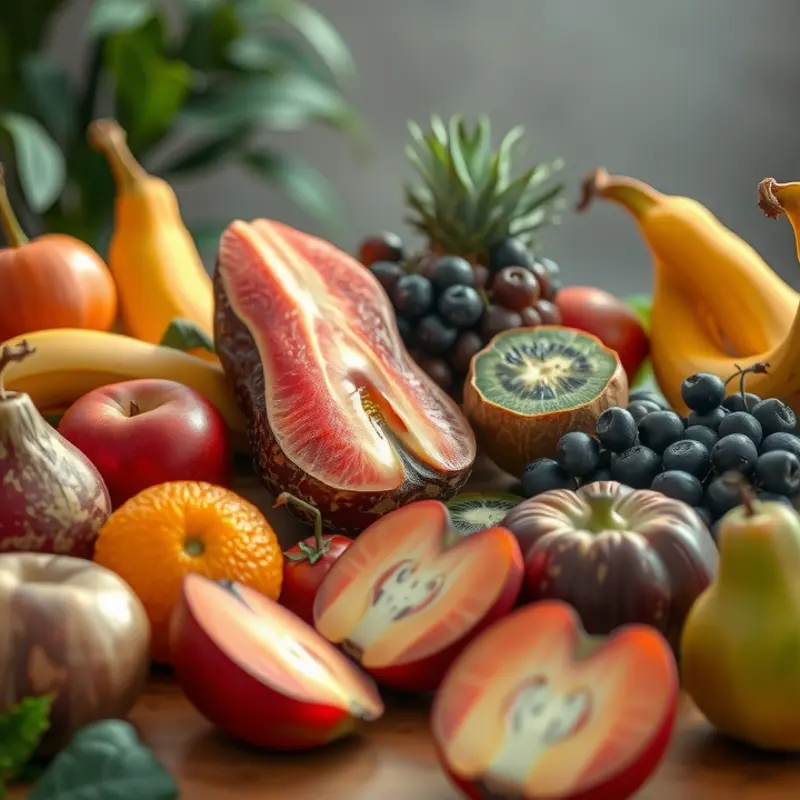Fresh juice and whole fruits often stir debate among health enthusiasts. While both provide essential nutrients, the comparison poses some interesting questions. Is one more beneficial than the other? How do they stack up in terms of vitamins, fiber, and satiety? Understanding these aspects can aid your dietary choices and enhance your overall nutrition.
Nutritional Breakdown: Juice versus Whole Fruits

When examining the nutritional profiles of fresh juice and whole fruits, key differences emerge that impact health. One primary distinction is calorie content. Juice often contains more calories per serving than whole fruits, primarily due to the concentration of sugars. For instance, a cup of orange juice can have nearly twice the calories of a whole orange. This is crucial for those monitoring calorie intake.
Sugar content also varies considerably. Juicing extracts the liquid and sugars, often leaving the fiber behind, resulting in a sweeter, more calorie-dense beverage. A medium apple contains about 19 grams of sugar and 4 grams of fiber. In contrast, a cup of apple juice contains approximately 24 grams of sugar but negligible fiber. The lack of fiber in juice means sugars are absorbed more rapidly, which can lead to spikes in blood sugar levels. This rapid absorption is a concern for individuals managing blood sugar levels, such as those with diabetes.
Fiber is another critical consideration. Whole fruits provide dietary fiber that supports digestive health and helps maintain steady blood sugar levels. Fiber slows the absorption of sugars, promoting more controlled energy release. For instance, a whole pear provides about 6 grams of fiber, meeting approximately 20% of the daily fiber requirement. Juices, unfortunately, lack this dietary benefit because juicing typically removes the pulp where fiber resides.
Vitamins are abundant in both fresh juice and whole fruits. However, whole fruits generally offer a more balanced nutrient profile. For example, oranges are renowned for their vitamin C content, vital for immune function and skin health. When juiced, oranges still provide vitamin C, but the absence of fiber and other phytonutrients reduces nutritional diversity.
Phytonutrients are compounds that offer health benefits beyond basic nutrition. In whole fruits, these compounds help fight inflammation and reduce the risk of chronic diseases. The skins of apples contain flavonoids that are partially lost during juicing. These phytonutrients play a pivotal role in comprehensive nutrition, and their reduction in juice form can be detrimental to long-term health.
While fresh juices can be a convenient source of vitamins, whole fruits offer a more complete package of health benefits. For those interested in a holistic approach to nutrition or exploring how mindful eating can contribute to better choices, the integration of whole fruits may align well with a conscious dietary plan. To learn more about how mindful eating can help improve your dietary habits, consider exploring this resource on addressing unconscious eating.
In conclusion, both options have merits, but the choice depends on individual dietary goals. Whole fruits provide more balanced nutrition with essential fibers and phytonutrients, whereas juices offer convenience and a concentrated source of certain vitamins. Understanding these differences can aid in making informed nutritional decisions.
Health Implications: Satiety and Glycemic Impact

Understanding the balance between satiety and glycemic impact is crucial when comparing fresh juice with whole fruits. The fiber in whole fruits plays a key role in promoting feelings of fullness, or satiety, which can help control overall calorie intake. In contrast, fresh fruit juice typically lacks this fiber, often leading to less satiety and an increased likelihood of consuming excess calories.
Whole fruits like apples, oranges, and berries are dense in both soluble and insoluble fibers. These fibers slow down digestion, providing a gradual and sustained energy release. This slows the entry of sugars into the bloodstream, resulting in a lower glycemic impact. By comparison, fruit juice, even without added sugars, causes a more rapid spike in blood sugar levels due to the absence of fiber. This can lead to quick energy highs, followed by crashes that may prompt further consumption of high-sugar foods or drinks.
Incorporating whole fruits into a balanced diet can significantly benefit individuals aiming to manage their body weight and blood sugar levels. These fruits provide vital nutrients while also aiding in portion control, thanks to their satiety-inducing properties. Furthermore, the slower digestion associated with high-fiber content supports a steady insulin response, reducing the likelihood of insulin sensitivity issues over time.
However, fresh juice can still fit into a healthy diet if consumed wisely. It can be a convenient source of vitamins and hydration but should not replace whole fruits. A practical approach is incorporating juice as part of a meal that includes fiber, protein, or healthy fats to mitigate its glycemic impact. For instance, pairing fruit juice with a small serving of nuts can help stabilize blood sugar levels.
Linking this information to broader dietary habits, it is worth noting the importance of mindful eating practices in managing satiety and glycemic response. Developing mindfulness around food choices can enhance the understanding of how different foods affect satiety and blood sugar levels. For guidance on mindful eating strategies, you might explore articles like addressing unconscious eating to build healthier eating habits.
In sum, understanding the differences in satiety and glycemic impact between fresh juice and whole fruits illuminates how each can influence health and well-being. Whole fruits, with their natural fiber content, are generally a superior choice for those aiming for sustained satiety and stable blood sugar levels. Yet, with mindful consumption, fresh juice can still play a supportive role in a balanced diet.
Final words
In conclusion, while both fresh juice and whole fruits have their merits, whole fruits generally provide a more balanced nutritional profile, thanks to their fiber content and lower glycemic impact. Juices can be a refreshing addition to your diet but should not be seen as a replacement for whole fruits. Understanding these differences can empower you to make more informed dietary choices that promote long-term health and wellness. Embrace a variety of fruits in your diet and enjoy their health benefits.








